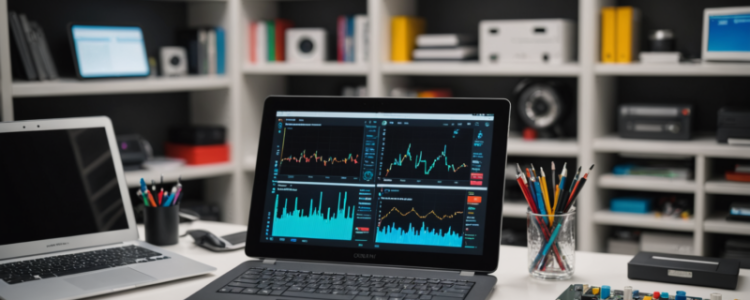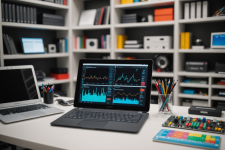In an era marked by rapid technological advancement, sensors have become an integral part of various industries, from automation and manufacturing to healthcare and consumer electronics. As the demand for sophisticated sensor solutions rises, so does the need for reliable, comprehensive vendors that provide high-quality products. The online platform SENS (перейти на сайт) emerges as a prominent player in this landscape, specializing in offering an extensive assortment of sensors and related electronic components. This article systematically explores the features, offerings, and significance of SENS as an online retailer dedicated to sensor technology.
Introduction to SENS: An Industry-Trusted Sensor Supplier
Based in Russia, SENS stands out as a specialized online store that primarily focuses on sensors, transducers, and measuring devices. Recognized for its commitment to quality and customer satisfaction, SENS caters to a diverse client base—including industrial manufacturers, research institutions, DIY enthusiasts, and educational facilities.
The platform’s core mission revolves around providing a one-stop-shop for a wide range of sensor solutions, ensuring accessibility, and empowering innovation across various sectors. Its user-friendly interface and detailed product catalog make it easier for customers to identify and procure specific sensing components tailored to their unique applications.
Product Range and Categories
Extensive Inventory of Sensors
SENS offers a broad spectrum of sensor types, each designed to measure specific physical or chemical parameters. The inventory includes but is not limited to:
- Temperature Sensors
- Pressure Sensors
- Proximity Sensors
- Light and Optical Sensors
- Humidity Sensors
- Gas and Chemical Sensors
- Accelerometers and Gyroscopes
- Flow Sensors
- Position and Displacement Sensors
- Sound and Vibration Sensors
Specialized Modules and Components
Beyond standalone sensors, SENS provides modules that allow for easier integration into complex systems, such as:
- Sensor Amplifiers and Signal Conditioners
- Wireless Sensor Modules
- Data Acquisition Systems
- Microcontroller-compatible Sensors
Brand Diversity and Quality Assurance
The platform stocks products from well-established manufacturers, such as Omron, Honeywell, Sensirion, and TE Connectivity, among others. This ensures that customers receive components that meet international standards for reliability, accuracy, and durability.
Advantages of Buying from SENS
Comprehensive Product Descriptions
One of the distinguishing features of SENS is its detailed product listings. Every item includes comprehensive specifications, application notes, technical datasheets, and usage recommendations, enabling buyers to make informed decisions.
Competitive Pricing and Promotions
The platform offers competitive pricing, often lower than traditional retail outlets, owing to its specialized supply chain. Periodic promotions and discounts provide additional savings, making high-quality sensors more accessible to a wider audience.
Fast and Reliable Delivery
SENS emphasizes efficient logistics, ensuring timely dispatch of orders. Customers can track shipments and receive their components in a matter of days, which is critical for time-sensitive projects or manufacturing processes.
Customer Support and Technical Assistance
The site provides expert support to assist with product selection, technical troubleshooting, and integration challenges. This guidance is vital for both seasoned engineers and newcomers navigating sensor technology.
Understanding sensor specifications: Key parameters and formulas
Core Measurement Parameters
Each sensor type has specific parameters that define its performance. Typical metrics include:
| Parameter | Description | Common Units |
|---|---|---|
| Range | The operational measurement span of the sensor. | e.g., °C, Pa, m/s |
| Accuracy | The degree of closeness to the true value. | e.g., ±% of full scale, ±°C |
| Precision | The repeatability of measurements under unchanged conditions. | e.g., standard deviation |
| Sensitivity | The ratio of output change to input change. | e.g., mV/°C |
| Response Time | Time taken for the sensor to respond to a change. | seconds or milliseconds |
Sensor Output Calculations
To interpret sensor data effectively, understanding formulas that relate sensor signals to physical quantities is essential. For example, in temperature sensors such as thermistors, the temperature (T) can be derived from resistance (R) using the Steinhart-Hart equation:
1/T = A + B * ln(R) + C * (ln(R))^3
Where:
- A, B, C are sensor-specific coefficients, usually provided in datasheets.
- ln(R) is the natural logarithm of resistance.
Similarly, for piezoelectric sensors that measure force or pressure, the output voltage (V) is proportional to the applied force (F):
V = S * F
where S is the sensor’s sensitivity in V/N (volts per Newton). Converting raw signals into meaningful parameters often requires calibration and applying the appropriate formulas, emphasizing the importance of selecting sensors with specifications aligned with the project requirements.
Integration and Application of Sensors
Industrial Automation
Sensors facilitate automation processes by providing real-time data for control systems. Pressure, temperature, and proximity sensors enable machinery to operate efficiently and safely, reducing downtime and preventing failures.
Environmental Monitoring
Gas sensors, humidity sensors, and optical sensors are instrumental in monitoring environmental parameters, ensuring safety compliance, and optimizing resource management in agriculture, urban planning, and ecological conservation.
Healthcare Technologies
In medical devices, sensitive sensors monitor vital signs, chemical levels, and bioelectric signals, driving advancements in diagnostics and patient care.
Consumer Electronics
The proliferation of wearable devices, smartphones, and smart home systems relies heavily on various sensors for user interactivity and automation.
Future Trends in Sensor Technology and SENS’s Role
With the continuous evolution of sensor technology, innovations such as IoT-enabled sensors, nanotechnology, and AI integration are shaping the future. SENS positions itself as a proactive player in this landscape by updating its offerings with cutting-edge solutions, fostering collaborations with manufacturers, and expanding its technical support capabilities.
Emerging Technologies to Watch
- Nano-sensors with ultra-high sensitivity
- Wireless and battery-free sensors leveraging energy harvesting
- Smart sensors with embedded AI for autonomic decision-making
- Multi-parameter sensors capable of simultaneous measurements
Conclusion
As industries and technologies become increasingly reliant on precise, reliable sensing solutions, the role of specialized retailers like SENS becomes ever more critical. By offering a broad spectrum of high-quality sensors, detailed technical information, and comprehensive customer support, SENS helps facilitate innovation and optimal system performance across various sectors. For engineers, researchers, and enthusiasts seeking trustworthy sensor components, SENS stands out as a compelling and dependable source, making it an integral part of the current and future sensor ecosystem.
Dr. Sarah Smith is a blueberry expert and author of BlueberryExpert.com. She has been growing and studying blueberries for over 20 years. Her research has focused on the different varieties, growing techniques, and nutritional content of blueberries. She is passionate about helping people to grow their own healthy blueberries and has been a leader in the industry for many years.Dr. Sarah Smith







